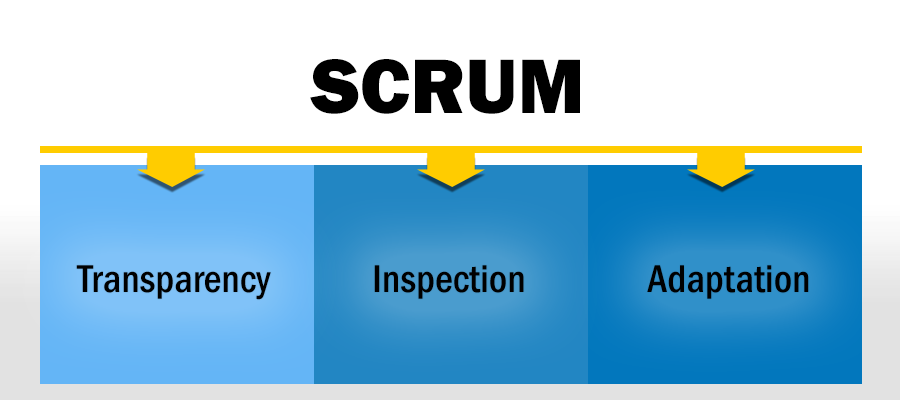3.3 The Three Pillars in Scrum
Scrum is all about handling a changing world in an effective way. In Scrum, decisions are made based on observation and experimentation rather than on detailed upfront planning.
Scrum uses an empirical approach in order to adapt to the changing requirements of the customer. Empirical approach is to work in a way that is based on facts, experiences, and evidence. In particular, progress is based on observations of real events, not on plans based on large amount of upfront requirements.
The three pillars of scrum that uphold the empirical approach in controlling the process are: Transparency, Inspection, and Adaptation

Transparency
Transparency in scrum can be realized by tools such as product backlog, task boards and burn down charts, daily stand-ups, retrospectives, definition of done, sprint reviews, etc. These are used to transfer the flow of work through a cross-functional team. This is one of the key advantages in scrum – allowing visibility about the progress of the work done by the team. In other words, when the team is achieving its goal, those responsible for it can be recognized and appreciated for the efforts.
Inspection
Scrum artefacts must be frequently inspected, as well as the progress towards a goal to detect undesirable deviations. Inspection in Scrum can be implemented by scrum activities such as:
- Use of a common scrum board and other communication tools to have a clear overview of the current status of the project for everyone
- Collection of feedback from the customer and other stakeholders during the development of epic(s)
- Creation of a prioritized product backlog, and conduct release planning processes
- Inspection and approval of the deliverables by the product owner
- The customer is present in the Demonstrate and Validate Sprint process
Adaptation
In the world of agile, we always embrace and adapt to changes, so that we can constantly improve. Adaptation means that we change what does not work or what could work better. It means that we constantly run small experiments, keep what is working, and change something in case of failure. We use the results from our inspections to decide which experiment to run next, for example:
- Development team inspects and adapts on a daily basis during the daily stand-up ceremony.
- Sprint review is another ceremony where the development team ask for feedback from all stockholders and adapt accordingly.
- During sprint retrospective, the development team discusses internally the issues and opportunities for improvements. They will prepare and adapt to a new plan as a team to generate more value.
